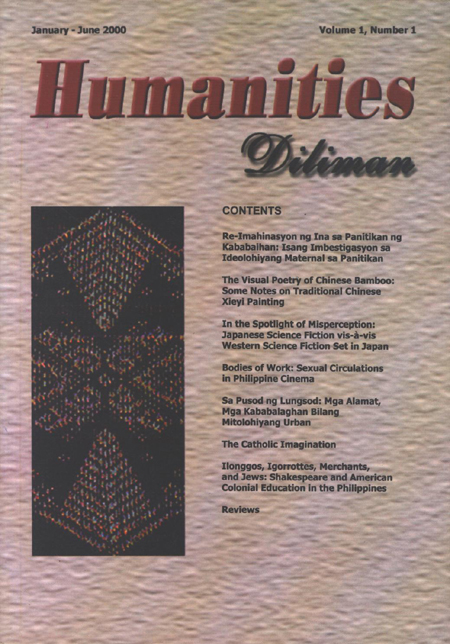Sa Pusod ng Lungsod: Mga Alamat, Mga Kababalaghan Bilang Mitolohiyang Urban
Abstract
Local urban legends such as narratives about supernatural occurrences and mythological characters-the manananggal of Tondo; white lady at Loakan Road, Baguio, and Balete Drive, Quezon City; the kambal-ahas of Robinson's Galleria and a mall in Davao City; pugot-ulo of Tagaytay City; engkantada of the market; tiyanak; mandaragit (Haring Kuto); salvation army of Calbayog City; the lost souls in the buildings which have existed since the Philippine Revolution and the World War II; and the anitos in mango and aratiles trees within the city-are intimately connected with the folk beliefs, philosophy, and mythology of the country. Interview results from various urbanized locales in the Philippines provide the context of the metaphor, motif, and images in the stories via a yearlong documentation and transcription. They also corroborate what sociologists and anthropologists have previously concluded, that the tensions due to urbanization, alienation, politics, technology, militarization, ecological degradation, and industrialization have been instrumental in the creation of modern folklore. The development of oral literature in the Philippines and the use of urban legends have effectively contributed to the production of popular culture and literature of the Philippines.
Published
2007-02-28
How to Cite
EVASCO, Eugene Y..
Sa Pusod ng Lungsod: Mga Alamat, Mga Kababalaghan Bilang Mitolohiyang Urban.
Humanities Diliman: A Philippine Journal of Humanities, [S.l.], v. 1, n. 1, feb. 2007.
ISSN 2012-0788.
Available at: <https://journals.upd.edu.ph/index.php/humanitiesdiliman/article/view/13>. Date accessed: 02 sep. 2025.
Issue
Section
Articles


